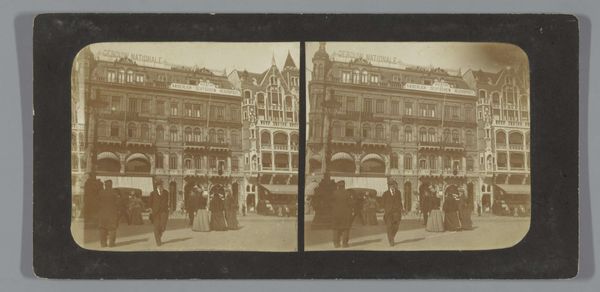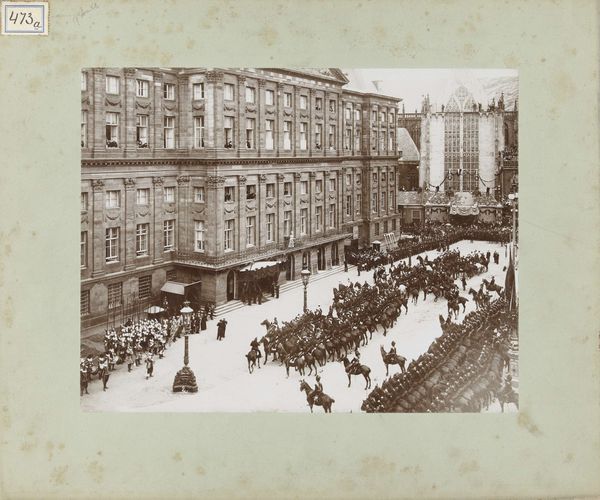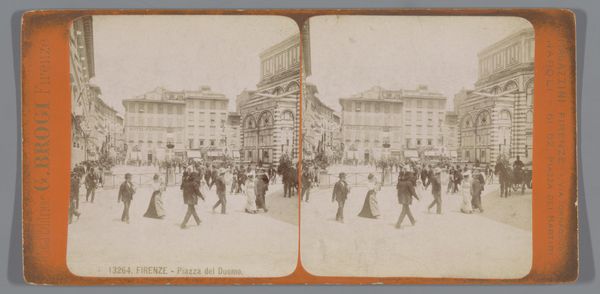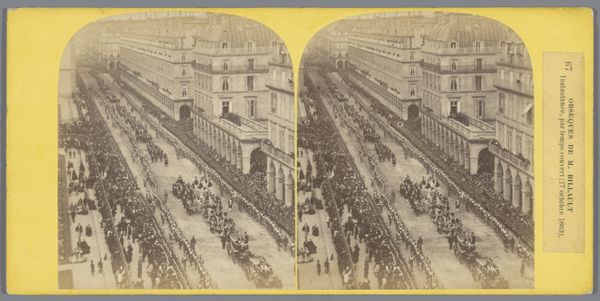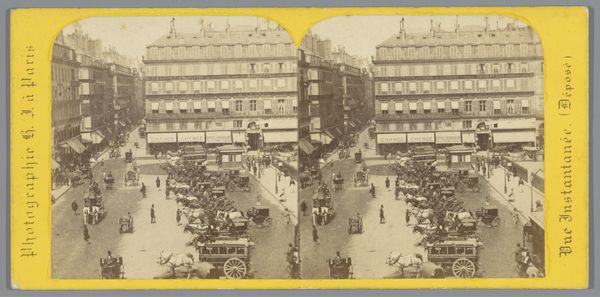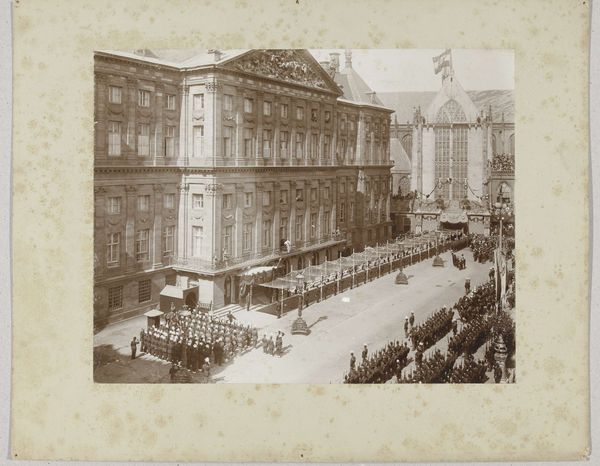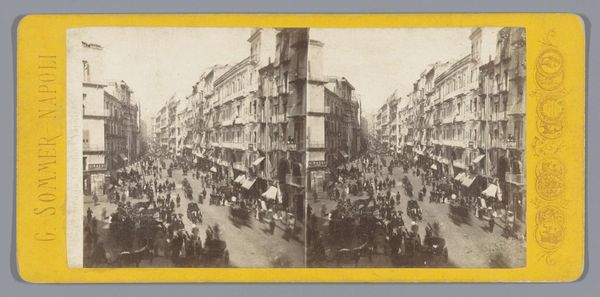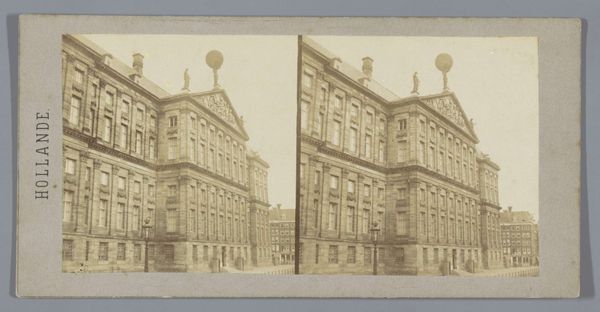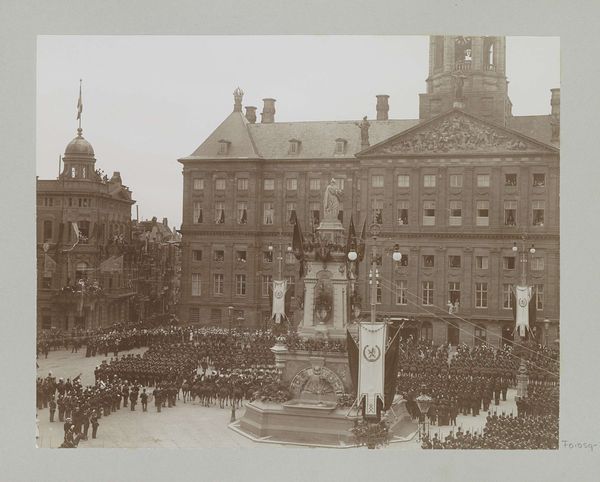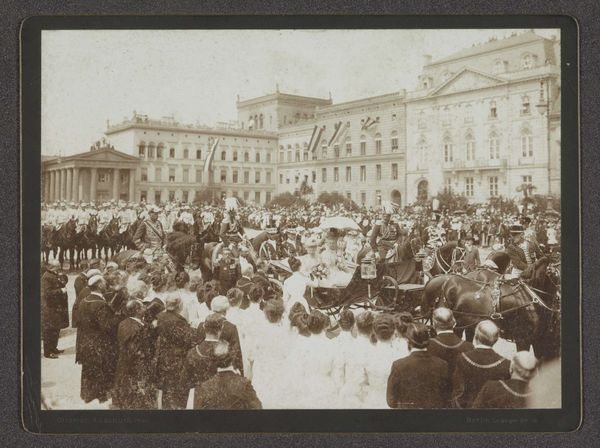
Versieringen op de Dam tijdens het bezoek van keizer Wilhelm II, Amsterdam Possibly 1891 - 1897
0:00
0:00
print, photography, gelatin-silver-print
#
portrait
#
dutch-golden-age
# print
#
photography
#
coloured pencil
#
gelatin-silver-print
#
cityscape
Dimensions: height 87 mm, width 179 mm
Copyright: Rijks Museum: Open Domain
This stereoscopic image, captured by Sigmund Löw, shows the decorations in Dam Square during Kaiser Wilhelm II's visit. The most striking symbols are the flags and emblems adorning the square, celebrating the meeting of two powerful nations, Germany and the Netherlands. Flags, historically, are potent symbols of national identity, pride, and allegiance, yet their meanings are ever-shifting. Consider the swastika, an ancient symbol of good fortune, which was later twisted into an emblem of terror. Similarly, here, flags evoke both celebration and a subconscious tension. The collective memory of conflict and alliance is palpable, demonstrating how symbols can be imbued with a complex mixture of emotions, oscillating between celebration and underlying unease. The presence of the monarchy, represented by royal emblems, adds another layer, evoking the psychological interplay between the individual and the state, power and submission. These symbols engage viewers on a deep, subconscious level, reminding us of the constant dance between progress and tradition. Symbols like these don't follow a linear path, but rather resurface, evolve, and take on new meanings across historical contexts.
Comments
No comments
Be the first to comment and join the conversation on the ultimate creative platform.
